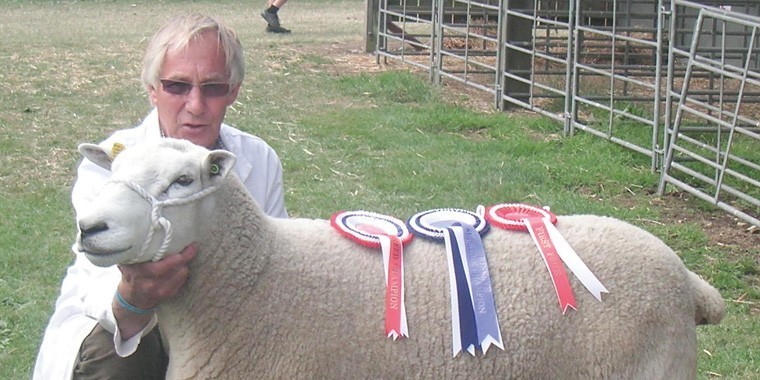Reading the essay by Robert Smith on the “Management of sheep” it very quickly becomes obvious how significant an impact, the then relatively new breeds developed by Bakewell and Ellman – the first livestock breeders to employ scientific principles to the breeding of sheep – were having on sheep production in the UK.
The Dishley Leicester and the Southdown had an enormous impact on British sheep production in the early nineteenth century, less than 100 years after they were first developed. Most of Smith’s description of breeds of sheep focuses on these two breeds alone, not just as pure breeds but how they were being extensively used to improve other local breeds.
The “Longwools” (Lincolns, New Oxfords, Cotswold, Teeswaters and Kent), had for hundreds of years been the mainstay of the English wool trade and their wool the keystone of the British economy. They are all described in less space than that allocated to either the Dishley Leicester and Southdown: even then part of the description refers to the contribution these two breeds, particularly the Leicester, had made to their improvement.
This does illustrate how important it is to maintain the genetics of our native breeds, even those that are currently unfashionable. The original Leicester is certainly a rare breed currently, as was the Southdown until comparatively recently. As a side note the Dishley Leicester also contributed quite significantly to the development of a number of the continental breeds: genetic resources that we exported in the past and have now re imported.
I know that things were different then, very different, and that we cannot live in the past. But agricultural practices do tend to go around in cycles, some quite long cycles, and we can certainly learn from our past. One thing that stands out from then is the contribution that sheep were making maintaining soil fertility and putting heart back into the soil in arable situations. A further lesson that we might well benefit from were the advantages gained from the extensive use of forage crops in sheep production. To the nineteenth century sheep farmer grass was not the only forage crop (the default position of many modern sheep producers). Extensive use was made of Swedish turnips (swedes), mangolds (fodder beet), turnips, and coleseed (rape), among other crops and arable by-products in order to reduce the dependence on expensive corn (read concentrates). This is certainly a lesson that we may benefit from today to reduce our production costs.
We are currently enjoying a period of reasonably good sheep and lamb prices, but I do fear that we may be being lured into a false sense of security. The drop in the value of sterling post the European Union referendum has made our lambs good value to continental buyers, who purchase some 40% of our output, providing a real boost to prices here.
But longer term prospects are far from clear. The only certainty is that post Brexit we are going to be looking at a significantly different trading position across the Channel. A lot depends on what sort of deal we are able to negotiate with the rest of the EU, but with some of our politicians talking about a hard Brexit and recent events with the Canadian trade talks, moving forward trading terms and conditions are unlikely to be very favourable.
Leaving the single European market will be great for those that want to take back control and control immigration and it may also help to reduce some of the regulatory burden. But it will almost certainly expose us to trade tariffs on products exported to the remaining EU, a tariff which currently for lamb stands at 40%.
Last year we saw a difficult trading year for lamb within the rest of the EU, due largely to the strength of sterling. A recent drop in the value of sterling of 17% to 20% has given rise to a significant improvement in that trading position and we are now seeing the financial benefits. But imagine what would happen with an effective 40% import tax on our lamb crossing the Channel. If the cost of that tariff were passed on to continental consumers, demand for our lamb would collapse, as, without doubt, would the UK sheep sector if we had to absorb that additional cost, or certainly the industry as we know it.
To develop new markets around the world will not be easy. Negotiations will be long and complicated and the collapse of the Canada/EU talks after seven years of negotiations are a good example of this. Don’t think that the EU will always want and need our lamb: there are other countries around the globe who will be quite happy to step in and take over our current market share.
To be successful going into the future the sheep industry needs favourable trade arrangements with Europe and innovators who are prepared to question the status quo and develop more efficient, cheaper production systems.




